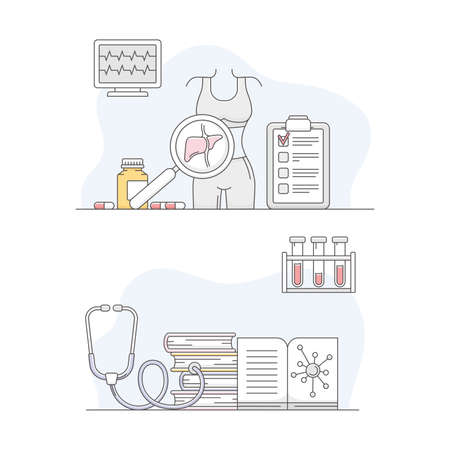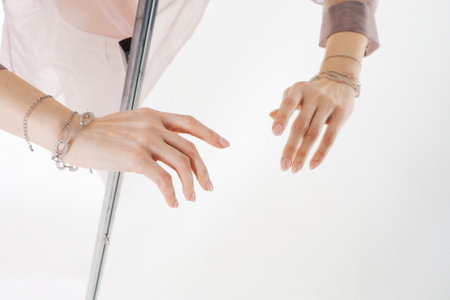1. Understanding Hand Injuries and Their Impact on Daily Life
Common Types of Hand Injuries
Our hands are essential tools for almost every daily activity, from getting dressed to making a cup of coffee. Unfortunately, hand injuries are quite common and can have a big impact on how we live our lives. Here’s a quick look at the most frequent types of hand injuries:
| Type of Injury | Description | Examples |
|---|---|---|
| Fractures | Broken bones in the fingers, hand, or wrist. | Boxer’s fracture, scaphoid fracture |
| Lacerations | Cuts or tears in the skin or deeper tissues. | Kitchen knife cuts, glass injuries |
| Tendon Injuries | Damage to the tendons that help move your fingers and thumb. | Mallet finger, flexor tendon rupture |
| Nerve Injuries | Damage to nerves affecting feeling and movement. | Carpal tunnel syndrome, digital nerve laceration |
| Sprains and Strains | Stretched or torn ligaments or muscles. | Thumb sprain (skier’s thumb), wrist strain |
| Burns and Crush Injuries | Thermal, chemical burns or trauma from heavy objects. | Hot pan burn, machinery accident |
How Hand Injuries Affect Daily Activities
The impact of a hand injury goes far beyond pain or discomfort—it can affect almost every aspect of your day. For example:
- Dressing: Buttoning shirts, tying shoes, or zipping up a jacket becomes challenging.
- Eating: Using utensils like forks, knives, and spoons can be difficult if you have limited grip or sensation.
- Personal Care: Tasks like brushing teeth, washing hair, or shaving may require assistance.
- Work: Many jobs in the U.S., whether office-based (typing) or manual labor (using tools), rely heavily on good hand function.
- Leisure Activities: Hobbies such as cooking, gardening, playing musical instruments, or sports may be put on hold during recovery.
The Importance of Hand Function for Independence
Your hands play a critical role in your ability to live independently. In American culture especially, there is a strong emphasis on self-sufficiency—being able to drive, prepare meals, care for your family, and manage your own home. When a hand injury happens, it doesn’t just slow you down; it may limit your ability to do things on your own. This is where occupational therapy comes in: by helping people regain strength and skills after a hand injury, therapists support clients in returning to their usual routines and maintaining independence.
2. The Occupational Therapist’s Role in Hand Rehabilitation
Understanding the Unique Expertise of Occupational Therapists
Occupational therapists (OTs) play a crucial role in helping people recover from hand injuries. Their specialized training allows them to look at the bigger picture—focusing not just on healing the hand, but also on restoring the ability to perform daily activities that matter most to each person. Whether it’s getting back to work, cooking meals, or playing with kids, OTs help people regain independence and confidence.
Assessment: Looking Beyond the Injury
The first step an OT takes is a thorough assessment. This goes beyond checking swelling or range of motion. OTs look at how the injury affects your ability to do things you need and love to do. They might observe you trying tasks like buttoning a shirt, holding a pencil, or using tools at work. Here’s how an OT assessment typically breaks down:
| Assessment Area | What the OT Looks For |
|---|---|
| Physical Status | Pain levels, swelling, range of motion, strength, sensation |
| Functional Abilities | Ability to complete daily tasks (dressing, eating, grooming) |
| Work & Leisure Impact | How the injury affects job duties or hobbies |
| Home Environment | Possible barriers or supports at home for recovery |
Goal Setting: Making It Personal and Practical
After understanding your challenges and strengths, OTs work with you to set personal goals. These aren’t one-size-fits-all; they’re based on what’s important in your life. For example, if you’re a chef who needs fine motor skills, your goals will focus on tasks like chopping or stirring. If you’re a parent, maybe buttoning your child’s coat matters most. OTs make sure goals are clear, realistic, and motivating.
Examples of Personalized Goals:
- Tying shoelaces without assistance within 6 weeks
- Returning to work as an electrician in 8 weeks
- Being able to cook family meals independently in 1 month
Treatment Planning: A Holistic Approach
Once goals are set, OTs design a treatment plan tailored just for you. This might include exercises for strength and flexibility, pain management strategies, and practice with real-life activities. They may also recommend adaptive equipment (like built-up handles or splints) and teach ways to protect your hand as it heals.
| Treatment Focus | Common OT Strategies |
|---|---|
| Pain & Swelling Management | Ice/heat therapy, elevation, gentle massage techniques |
| Improving Movement & Strength | Therapeutic exercises, stretching routines, graded activity practice |
| Skill Re-training for Daily Tasks | Task simulation (e.g., using utensils), adaptive equipment training |
| Work & Home Modifications | Splinting, ergonomic recommendations for safer movement patterns |
| Counseling & Support | Coping strategies for emotional adjustment after injury |
The Big Picture: Guiding Recovery Every Step of the Way
Your occupational therapist acts as both coach and partner throughout rehabilitation—constantly adapting their approach as you heal and grow stronger. Their unique expertise ensures that recovery is about more than just fixing your hand; it’s about getting you back to living life on your terms.

3. Evidence-Based Interventions and Techniques
Therapeutic Exercises
Occupational therapists use a variety of therapeutic exercises to help patients regain strength, flexibility, and function after a hand injury. These exercises are tailored to each individual’s needs and may include:
| Exercise Type | Purpose | Common Examples |
|---|---|---|
| Range of Motion (ROM) | Improve joint flexibility and prevent stiffness | Wrist circles, finger stretches |
| Strengthening | Restore muscle power in the hand and forearm | Squeeze balls, putty exercises, rubber band extensions |
| Fine Motor Skills | Enhance coordination and dexterity for daily tasks | Picking up small objects, buttoning practice, pegboards |
Splinting and Orthotic Devices
Splinting is a cornerstone of hand rehabilitation in the United States. Occupational therapists custom-make splints to support healing, protect injured areas, or improve function during recovery. The main types of splints include:
- Static Splints: Hold the hand in a fixed position to allow healing or prevent contractures.
- Dynamic Splints: Use springs or elastic bands to gently move joints, promoting mobility while healing.
- Functional Splints: Enable participation in daily activities by supporting weak muscles or joints.
When Are Splints Used?
Splints are often used after surgeries, tendon repairs, fractures, or when there is nerve damage. They are adjusted as healing progresses to maximize comfort and effectiveness.
Activity Modifications and Adaptive Strategies
A major focus of occupational therapy is helping people return to their daily lives. Therapists teach strategies to modify activities so patients can complete tasks safely and independently. Common approaches include:
- Adaptive Equipment: Using tools like built-up handles, jar openers, or button hooks to make self-care easier.
- Pacing and Energy Conservation: Breaking tasks into smaller steps and resting between activities.
- Task Simplification: Rearranging routines or using one-handed techniques for cooking, dressing, or grooming if needed.
- Home Modifications: Recommending changes at home such as lowering shelves or installing grab bars for safety.
Pain Management Techniques
Pain control is crucial in hand injury rehabilitation. Occupational therapists use evidence-based methods such as ice/heat therapy, desensitization exercises, and gentle massage. Education on proper positioning and movement can also help reduce discomfort during recovery.
Cultural Considerations in American Healthcare Settings
In the U.S., occupational therapy services often involve close collaboration with physicians, physical therapists, employers, and families. Insurance coverage may influence the frequency of sessions and access to adaptive equipment. Patient education is always emphasized so individuals understand their treatment plan and feel empowered throughout recovery.
4. Patient-Centered Care and Cultural Sensitivity
Understanding Patient-Centered Care in Hand Injury Rehabilitation
Patient-centered care means putting the needs, values, and preferences of each person at the heart of their rehabilitation plan. In occupational therapy for hand injuries, this approach helps ensure that treatment is not only medically effective but also meaningful to the individual’s daily life.
Tailored Interventions: One Size Doesn’t Fit All
No two patients are alike. People have different lifestyles, job demands, family roles, and hobbies. Occupational therapists design customized interventions that match each person’s specific goals and challenges. For example, a chef with a hand injury might need therapy focused on gripping kitchen tools, while a parent may prioritize being able to dress their child or prepare meals.
| Patient Goal | Customized Intervention Example |
|---|---|
| Return to work (construction) | Strengthening exercises for grip and lifting |
| Self-care (dressing/feeding) | Adaptive equipment training and fine motor practice |
| Parenting tasks | Safe techniques for lifting and holding children |
| Hobbies (music, sports) | Task-specific hand coordination activities |
The Importance of Patient Education
Education is a key part of successful rehabilitation. Therapists teach patients about their injury, healing process, and what activities to avoid or safely resume. This helps people feel more confident and engaged in their own recovery. Easy-to-understand instructions, hands-on demonstrations, and written materials can all be used to meet different learning styles.
Cultural Sensitivity in Diverse American Communities
The United States is made up of many cultures, languages, and traditions. Therapists need to respect these differences when creating care plans. This includes:
- Providing language support or interpreters when needed
- Understanding cultural beliefs about pain, healing, or disability
- Being aware of different family structures and support systems
- Adapting therapy schedules around religious or community events
- Selecting home exercise routines that fit within daily routines or living spaces
Addressing Social Factors That Influence Recovery
Social factors like access to transportation, insurance coverage, work demands, and family responsibilities can all affect how well someone recovers from a hand injury. Occupational therapists work with patients to problem-solve barriers such as getting to appointments or completing exercises at home. They may also connect patients with community resources for extra support.
5. Collaboration, Advocacy, and Community Support
Occupational therapy (OT) for hand injury rehabilitation is much more than just individual exercises or treatments. It’s a team effort that involves working closely with different people and organizations to help clients get back to their daily lives. Let’s take a look at how occupational therapists collaborate, advocate, and connect with the community to support clients with hand injuries.
Collaboration With Healthcare Professionals
Occupational therapists often work hand-in-hand with physicians, surgeons, physical therapists, and nurses. This teamwork ensures everyone is on the same page regarding the client’s progress, restrictions, and goals. Regular updates and shared treatment plans help create a seamless recovery process. For example, after surgery, an OT might coordinate with a doctor to adjust therapy based on healing stages or medical concerns.
Key Collaborators in Hand Injury Rehabilitation
| Collaborator | Role in Rehab | How OT Works With Them |
|---|---|---|
| Physicians/Surgeons | Medical management, surgeries, progress checks | Share updates, follow post-op protocols, adjust therapy as needed |
| Physical Therapists | Focus on strength & mobility of entire arm/shoulder | Coordinate exercises; prevent overlap or gaps in care |
| Nurses | Wound care, medication management | Share information about splints and skin checks |
| Mental Health Providers | Counseling for emotional impact of injury | Refer clients who may need extra support coping with lifestyle changes |
Advocacy for Clients’ Rights and Needs
Occupational therapists are strong advocates for their clients. They help ensure clients receive the equipment, workplace accommodations, or insurance benefits they need for optimal recovery. For example, if a client needs adaptive tools at work or home, the OT can write letters or reports supporting these requests.
Working With Employers and Insurance Providers
| Stakeholder | How OT Supports the Client | Examples of Advocacy Actions |
|---|---|---|
| Employers/Supervisors | Facilitates return-to-work plans; suggests job modifications or adaptive devices | Emailing employer about necessary adjustments; providing ergonomic recommendations; setting up gradual return schedules |
| Insurance Providers (Workers Comp/Private) | Ensures coverage for therapy sessions and adaptive equipment; clarifies medical necessity | Completing documentation; phone calls to case managers; appealing denials if needed |
Connecting With Community Resources
The journey doesn’t end when formal therapy does. OTs link clients to community resources like local support groups, vocational rehab programs, or adaptive sports organizations. These connections provide ongoing encouragement and opportunities for social participation.
Examples of Community Support in the U.S.
- Vocational Rehabilitation Services: Help clients retrain for new job roles if needed.
- Peer Support Groups: Offer emotional support from others who have gone through similar experiences.
- Adaptive Recreation Programs: Enable clients to enjoy hobbies like gardening or golf using special equipment.
This collaborative approach—working with healthcare professionals, advocating for client needs with employers and insurers, and tapping into community resources—makes occupational therapy a truly holistic part of hand injury rehabilitation in the United States.


